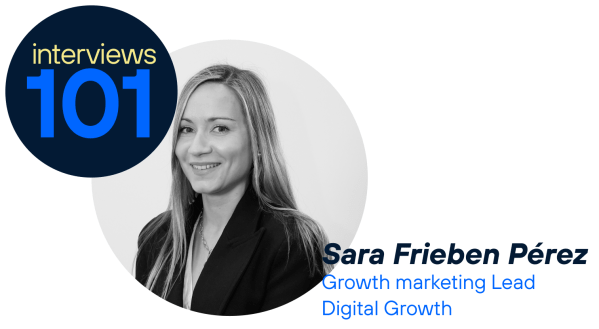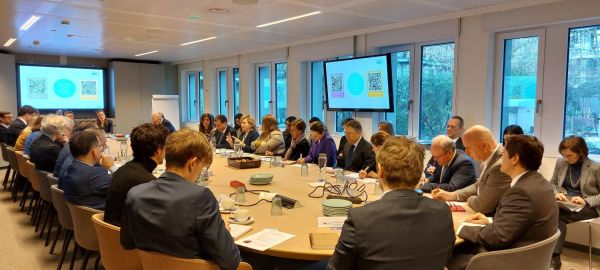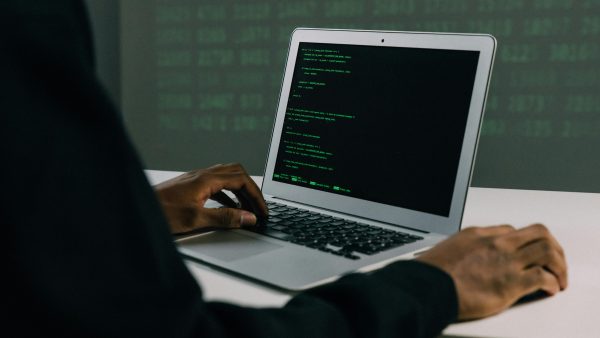At Telefónica we have a significant number of Open Innovation initiatives, but in 2020 we launched a couple of initiatives that represent our approach to early-stage Open Innovation: Wayra Builder, a venture builder that allows us to create startups and invest in them, and Open Innovation Campus, our instrument to explore and implement innovation collaboration models with the academic world. In this article I will explain how our early-stage Open Innovation model works. Some key learnings from our journey will be shared as well.
What does early-stage Open Innovation mean?
According to Henry Chesbrough, the father of Open Innovation:
Open innovation means that valuable ideas can come from inside or outside the company and can go to market from inside or outside the company as well.
This implies there is not just one single way of doing Open Innovation but a big range of alternatives, like working with or investing in startups, partnerships and joint ventures, building a research consortium, spin-offs, licensing or buying intellectual property, participation in the definition of standards, co-creation with clients, crowdsourcing or collaborating with universities among others.
At Telefónica we have several Open Innovation initiatives that focus on detecting innovation that occurs outside the company in order to integrate it into Telefónica. Through these initiatives, we involve different agents of the entrepreneurial ecosystem such as startups, entrepreneurs, venture capital funds, and an extensive network of strategic partners. We work together with other agents in the entrepreneurial ecosystems in which we are present, developing alliances and joint verticalised programs in relevant technological industries to become the main partners of future game-changers.
This article looks deeply into the two initiatives that deal with the earliest phase of Open Innovation and, hence, represent what we call our early-stage open innovation approach: Wayra Builder and Open Innovation Campus.
Wayra Builder, our startup creation vehicle
In 2006, we launched our first investment vehicle: Telefónica Ventures. Since then, we have maintained our unwavering commitment to bring innovation to our company through collaboration with entrepreneurs around the world. In 2011 we launched Wayra and in 2020 Wayra Builder and Wayra X. Wayra Builder aims to increase the value of Telefónica’s portfolio of startups by complementing the existing investment vehicles, through the creation of new companies based on innovative ideas with a high potential market. Wayra X is an investment vehicle that invests in B2C startups in the early stage (hence it could be also considered part of our early-stage approach, but is not being covered in this article). This way we have been able to generate an ecosystem with different initiatives covering all stages of entrepreneurship both in terms of the maturity of the startups and the investment ticket.
Through Wayra Builder we create and invest up to 350k€ in startups that come from business ideas conceived in four markets where Telefónica is operating: Spain, UK, Germany and Brazil. As a result of this investment we obtain a maximum of 20% of the equity, to ensure the resulting startups captable does not compromise future investment rounds. The business ideas must be 100% digital, with no proprietary hardware, and within one of the following key areas: IoT, Video, Cloud, AI, Cybersecurity, Big Data, Gaming, or Metaverse. The ideas can be both B2B or B2C and, although they are born locally in any of the aforementioned countries, they aim to become global companies.
When Wayra Builder was created, it was mainly a vehicle for spinning-out internal ideas. It keeps on being a spin-out vehicle, but we also are leveraging the knowledge Telefónica’s business units have to identify areas of opportunity as well as other initiatives like our New Trends team (a team devoted to explore future trends in different industries and markets) and Open Future (a strategic regional entrepreneurship program developed in alliance with public and private partners). At the same time, we’re looking for external sources of ideas like other venture builders, other corporates, the academic world, our own website and, of course, word of mouth. So, we experiment with these sources to understand what works and what does not, and learn how to make them work.
In order to build startups and improve their success rate, it is essential to prototype and validate as many hypotheses as possible. To this end, the Wayra Builder team is multidisciplinary so that it supports founders not only during the validation phase before the startup is created, but also after the startup is created. We provide technological, UX, product, and business advice to our founders and startups. We call it 360 Advice, as we are covering all the areas where the founder and the startup might need support.
Our way of working might be tailored to the particular situation of the business idea, but follows the following principles:
- Identify and validate the idea. Venture building projects are born from an exhaustive exercise of either gathering ideas and/or technologies owned by Telefónica or through the exploration of other external sources. Once the idea has been selected, we carry out an exercise of developing a business plan.
- Build the team. If the team does not already exist, first we identify the CEO that matches the profile needed, then we build the rest of the team. The profiles vary depending on the type of startup and its degree of maturity.
- Look for co-investors. All projects need a minimum amount of capital to be founded. Depending on the type of project, this amount will be different, but should be enough to cover the next 18 to 24 months of the startup needs. We look for co-investors not only to ensure the startup raises the capital needed to start but also because having other investors interested in the startup creation is part of the business idea validation process.
- Found the startup. Once we have identified the idea, built the team, and secured the co-investors we create the company, supporting the team during this process and structuring a proper captable that will help the startup attract other investors in the future.
- Support the MVP build and launch. From that moment on, Wayra Builder supports the startup team in the development of the minimum viable product (MVP) and its launch in the market.
Since Wayra Builder was launched, we have created four startups. All of them, but one, which was recently, are up and running. The ones currently active in our portfolio are:
- Deeder provides businesses a way to offer their customers a simple and quick way to sign contracts through a messaging platform. All while having a stronger legal validity than handwritten signatures.
- Shaadow is a cybersecurity startup that protects business documents, preventing your company from leaking its confidential documents by protecting them with an invisible watermark that allows full traceability of the documentation.
- Wiper is a gamers education platform. An innovative educational model based on AI, cognitive skills and soft skills, close contact between Ex Proplayers and amateur gamers through a powerful online platform and training content.
Shaadow and Deeder were initially patented technologies we had developed at Telefónica and subsequently identified as an opportunity to spin-out. Wiper is the result of a collaboration with another venture builder.
Telefónica Open Innovation Campus, a bidirectional bridge with Academia
Open Innovation Campus (OICampus) was born in March 2020 with the mission of being a bidirectional bridge that closes the gap between the academic world and Telefónica by designing, executing, and scaling collaboration models. Such models combine the assets of both worlds to create impactful innovation that addresses key needs, challenges and opportunities identified in the company.
A key aspect of our way of working is that everything starts with a need, a problem, challenge or opportunity identified in the company that can be addressed by collaborating with the academic world. Once the need is validated, we approach academic institutions and design and implement a collaboration model that combines our assets to get the expected results. As Open Innovation Campus is a bidirectional bridge, sometimes an academic institution approaches us with a proposal for addressing a need.
No doubt the academic world offers a range of possibilities to cover corporate needs. These possibilities can be linked to four types of needs that we have in companies:
- Knowledge and technology.
- A source of inspiration.
- A form of expansion.
- Talent.
Next, we will delve into each of these types of needs with concrete examples of initiatives that we have carried out from OICampus, which allow us to illustrate the relevance of these collaborations for both the company and the academic world.
- Knowledge and technology.
As an example of collaboration in this line, in 2021 we launched the Immersive Technologies LabStudio together with a research group from the Universidad Carlos III de Madrid (UC3M). In this lab, Telefónica’s Digital Home experts and researchers from the University explored one key challenge: the correct configuration of devices by end users and the resolution of problems that arise with technology. - Source of inspiration.
Academia is also a source of inspiration. In this sense we have carried out different initiatives with a focus not only on innovation, but also on entrepreneurship. We have launched open calls for university students, in search of ideas and inspiration to solve real technological challenges in the context of digital transformation in topics like how to address the problem of fake news using AI (Artificial Intelligence) or how AI can help people meet their needs in their homes. We are also supporting Wayra Builder to approach universities looking for ideas and projects from their students and researchers that could potentially become startups. In this line, we have launched in 2021 a challenge in the academic ecosystem of Israel. And we are participating in the challenge “From idea to product”, whose purpose is to reward the best business projects in 10 Andalusian universities.
Besides, we help Wayra X, our investment vehicle to reach university incubators and accelerators outside Telefónica’s footprint in order to identify potential startups to invest in. - A form of extension
The academic world also offers companies a way to extend and get to what they are not able to reach on their own.
In this area we launched the Tinkering Lab Living Games, where we developed three casual games for our TV product together with students of different profiles related to video games design and coding from the U-tad University. During six months, the students got an internship to work on this Lab with Telefónica’s Digital Home team to create three proposals of casual games inspired by the classic Memory, Noughts and Crosses or Connect 4.
Besides, the TUTOR Programme, with more than four years of history and directed to the most relevant national and international universities, offers real market challenges to students as a theme for their degree thesis and master thesis. Thus, providing the opportunity to connect the best experts of Telefónica with university talent. - Talent
And, of course, the academic world is an undoubted source of talent. In fact, identifying talent is always an expected result for all the activities we carry out at Open Innovation Campus.
We are placing special emphasis in promoting female STEM talent. We are part of the #AlianzaSTEAM promoted by the Spanish Ministry of Education. Open Innovation Campus launched in Telefónica the program #GirlsLoveTech with the main objective of encouraging young women to choose scientific and technological careers. This program consists of different initiatives with the purpose of guiding young women and their professional careers towards the new digital profiles. The program includes the participation of a community of women #STEAM at Telefónica, with training and mentoring activities for young women from all over Spain.
Key learnings
Our current approach to early-stage Open Innovation is the result of the evolution of the different initiatives we have created during all these years and, more importantly, our lessons learnt.
There are some general lessons that could be applied to any type of innovation initiative. Specifically:
- Alignment with the company strategy and priorities is key. Otherwise, you will be doing innovation theatre, and, therefore, the company will not care about the results you are achieving through your innovation initiatives.
- Make sure you are creating value, and measure it, so you can show the impact that your innovation initiatives have in the company.
- Open Innovation initiatives enhance cultural shift and process transformation. Learn how to work with third-parties (startups, partners, academic institutions…) by adapting the processes in the company and being more flexible.
- Once you have some years of experience, you can use your platform, knowledge and infrastructure to serve third parties (like other corporations and public bodies) as another way to strengthen your ecosystem and even as another way to generate revenues that support your Open Innovation activities.
We have also some specific learnings with regards to our venture building experience:
- A clear investment thesis sets the objectives and rules of the game for everyone, including your investment committee.
- A good team and market validations are key. The chances of success are higher with a good team and a bad idea than a bad team with a good idea. Market validations are absolutely necessary. Our decisions are based on market evidence and validations around the project or idea, but also, as mentioned before, having other investors onboard is part of our validation process.
- Corporate assets are a strong differentiator. We’re not just investors, in corporations we have certain assets that can help startups grow. We support our startups through the aforementioned 360 Advice, we can also help them generate business, and they benefit from being in our entrepreneurial ecosystem and our connections. Whereas, we don’t want to be our startups first customer, because we are not the fastest customer and because we don’t want them to depend on us. Our startups are independent companies, hence it’s important to prove there is a potential business opportunity and we’re not the only potential customers.
- Be always open for ideas and sources of ideas. Ideas from inside and outside the company, take advantage of any opportunity that allows to scout for ideas. And experiment with the different sources of ideas, learn which ones work and how to make the most of them. Look for the right partners. Do not be afraid to reject ideas, you’re going to have to reject a lot of them to find one you want to move forward with. You will have to make decisions without having 100% certainty, so you will have to take risks.
And I would like to end with some particular learnings with regards academia and enterprise collaboration:
- If you want the results of the collaboration to have an impact in your company, you have to make sure you are addressing a need you have in the company. Otherwise, this collaboration will be “a nice to have” and the probabilities of getting something meaningful and hence used by the company are very low.
- Obviously, the company and the academic institutions are very different not only in their way of working but also in their objectives. Think that in an academic institution we have, on the one hand the institution itself, on the other hand professors and researchers (and in the case of universities you also have the students). The goals and needs of each of these actors are very different.
Therefore, from the first moment you must be very transparent and very clear about the objectives that each part wants to achieve. Empathize with each other’s goals to find where they converge and determine what priorities and what results are expected from the collaboration.
- Design and implement a collaboration model that allows meeting the needs of both. We started by creating a portfolio of more than twenty possible collaboration models that we use to design and build the collaboration models we implement.
- Where to focus all your efforts is something that must be very clear at all times. For example, in the aforementioned Labstudio, we established quarterly objectives, reviewed the results and once again set objectives for the following quarter. And, of course, this must be accompanied by a very fluid channel of communication between both teams on a day-to-day basis.
For Telefónica, the ability to anticipate the future is key, this allows us to understand society’s needs and to continue being pioneers in the digital world. To achieve this, we rely on the innovation created internally and on what our Open Innovation initiatives bring in all the stages, including of course our early-stage initiatives Wayra Builder and Open Innovation Campus.










